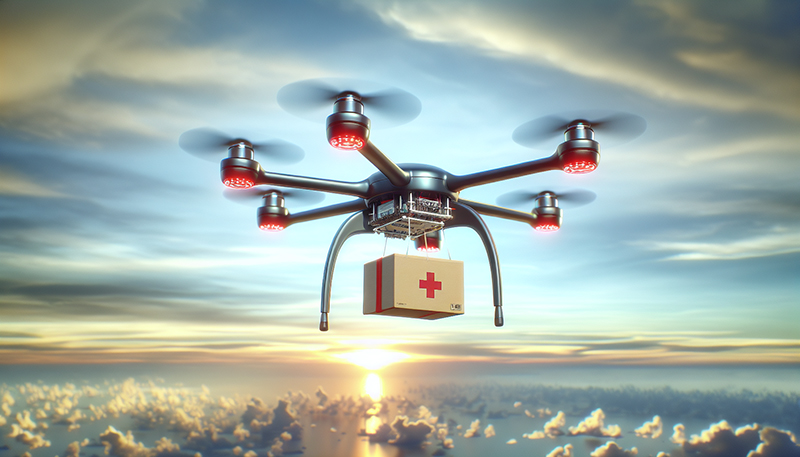
Insight by: Debbie Lin
Recently, I watched an insightful talk by Keenan Wyrobek, the CTO of Zipline, which sparked my interest in the transformative potential of drones in healthcare. My experience working on projects involving unconventional technologies for health systems in regions lacking the infrastructure available in urban metropolises like Los Angeles or New York City further fueled this interest. I am particularly inspired by the concept of elegantly repurposing existing technologies to innovate and enhance healthcare access and efficiency.
According to Keenan, drones are being used for rapid delivery of medical supplies, such as blood, vaccines, and medications, particularly in remote or hard-to-reach areas. They also play a critical role in emergency response, transporting life-saving equipment like defibrillators to accident sites faster than traditional methods. Additionally, drones are utilized for telemedicine in home healthcare settings, allowing healthcare providers to remotely assess and treat patients by delivering diagnostic tools and facilitating communication and thereby making healthcare more efficient and cost effective.
By integrating drones, healthcare providers can improve inventory management, ensuring that essential medicines and equipment are always available where needed. It enhances efficiency by enabling faster delivery of critical medical supplies, especially to remote or underserved areas, ensuring timely access to care. This approach can reduce costs associated with traditional logistics, such as fuel and labor, while also minimizing delays caused by traffic or infrastructure limitations. Companies like Zipline, Matternet, and Wingcopter are at the forefront, revolutionizing healthcare delivery and emergency response through advanced drone technology
I found it interesting to learn that the technology did need to be built from the ground up. Special features that drones for healthcare require that distinguish them from other types of drones include enhanced payload capabilities to safely transport medical supplies, including temperature-sensitive items like vaccines, and requiring integrated cooling systems. Precision in navigation is crucial to ensure timely and accurate deliveries, often necessitating advanced GPS and obstacle detection technologies. Drones must also prioritize safety and reliability, incorporating fail-safes and redundancy systems to prevent failures during critical missions. Additionally, features like secure communication channels are essential to protect patient data and ensure compliance with healthcare regulations. Durability and the ability to operate in diverse weather conditions are also important, ensuring consistent performance in various environments.
The use of drones for healthcare is a nice example showing that we can often achieve significant progress by creatively repurposing existing ones to address new challenges and enhance patient outcomes.





